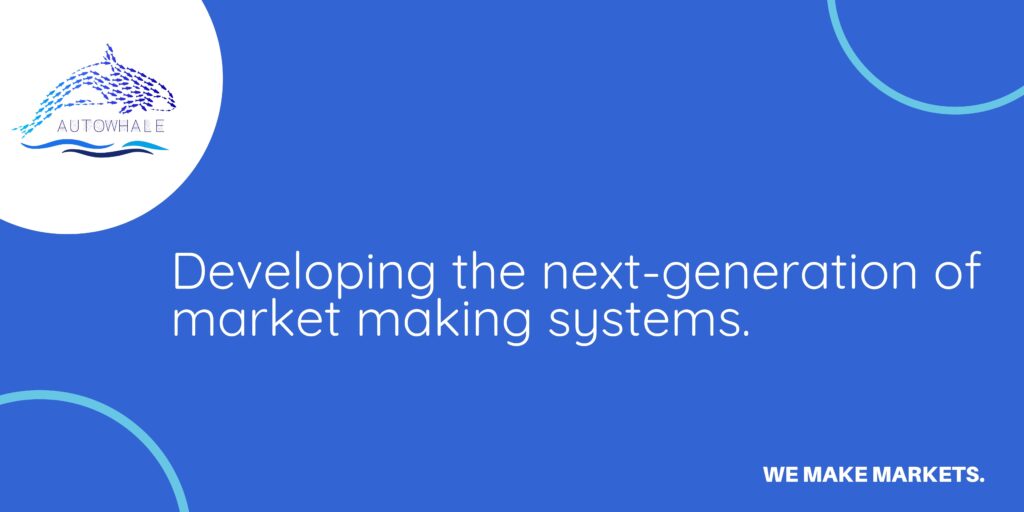Liquidity providers in financial markets have some sort of plan which they leverage to trade and provide capital to markets. To get a grasp of what a market making strategy could look like, we will discuss all the basics and set a foundation to have a fundamental understanding on how to create such a strategy.
Limit order books markets versus quote driven markets
To understand what a market making strategy is one first needs to understand the difference between limit order book markets and quote driven markets. A special form of quote driven markets are decentralized exchanges in crypto markets.
In limit order book markets, such as ones like on most centralized crypto exchanges or traditional stock exchanges, price discovery happens via an order book in which traders place limit orders to supply liquidity at certain price points. (i.E. Say Trader X submits a limit order to sell 10 Apple shares at 175$ with the current price being 168$) The set of all those limit orders make up the order book whereas the buy orders are also called bids and sell orders are also called asks. The difference in price between highest bid and lowest ask is called the spread. The distribution and amount of liquidity in the order book is called depth of the order book.
The price in limit order book markets is determined by the last successfully executed trade. Often websites show some weighted average price for the actual price, however in this article we will focus on the price in terms of the last executed trade.
In quote driven markets, a limit order book doesn’t exist. The market is made up of a central institution that offer a quote for buying and selling. (i.E. Think of a local physical gold dealer)
Like limit order book markets, quote driven markets also have a spread, however depth is not visible for the outside trader. The exception are decentralized exchanges, where automated market makers (AMMs) that are operated with a liquidity pool where traders commit their capital. When trading on DEXes buyers/sellers get quoted a price, like on quote-driven markets, however, due to the openness of blockchains, the “depth” is visible as the total amount of capital allocated in each liquidity pool.
In this article we will cover and focus on what a market making strategy in limit order book markets is.
Delta neutral trading strategies as part of an overall market making strategy
Before getting into what a market making strategy is, a concept called “delta neutral portfolio” or strategies is key to understand. Typically, a crypto market maker doesn’t want to be exposed to volatility in markets but to generate profits by capturing the spread or to fulfil certain requirements of exchanges or asset issuers.
In order to not have that kind of non-exposure in the market making strategy, the model or algorithm has to hedge their positions.
Generally speaking “delta” refers to the ratio of the change in the underlying (typically spot) asset compared to the change of the respective derivative change. Delta can range from -1 to +1 whereas in the physical spot market buying the asset results always in a delta of +1 as the position is always following the overall market performance. In e.g. options markets a change of -10$ in the spot market may for example lead to a change in the put options price of -2$ making the delta -0.2 in that case.
Now, in order to maintain delta neutrality, a trader has to – as in the example above – buy for let’s say 10 shares of the asset in the spot market (delta=1 => spot position delta = 10), 50 put options (50 X -0.2 = 10) at a delta of -0.2.

How can a market making strategy be defined?
Now that the basics are clear, let’s think about how a market making strategy can be defined. Recalling the concept of delta neutral portfolio allocation, let’s assume the market making strategy should not be impacted by price movements.
For simplicity, let’s assume we are deploying our market making strategy in a spot limit order book market and hedge with perpetual swap futures. In other words, this simple model can be applied for Bitcoin market making.
Hence, an approach could be to simply capture spreads of pairs of limit orders whereas each limit order pair has its own “spread” or “distance” between the orders. So, the profit of that strategy can be defined as the sum of the spreads of successfully executed pairs of limit orders. Having that said, one needs to keep in mind transaction costs.
What are transaction costs in market making?
Transaction costs in market making are those costs associated when trading on a market. As with our market making strategy, we place limit orders. Providers of such orders have to pay a maker fee upon execution which is typically lower than the taker fee (paid by market orders) or in some cases exchanges even offer discounted, negative or zero fee maker accounts for market makers.
Back to the market making strategy above. The profits generated by that model, have on the other side the costs which consist of transaction costs in the spot market, as well as the transaction costs in the derivatives market in which our model hedges its spot positions.
The hedging could look like the following: i.E. the buy order of the limit order pair gets billed, immediately on the derivatives market a short is opened for the exact same trade size as in the spot market so that delta = 0. Here one may face both transaction costs of the market order, the potential price fluctuations in the time window between limit order execution and market order execution as well as the potential premium/discount at which the derivatives market is trading.
The latter one usually doesn’t matter as much as market making is usually performed in a high-frequency trading environment in which trades happen fast and often. Hence, the time the position in the spot market is open is only short and the premium/discount ratio between spot and derivative doesn’t fluctuate too much.
Now that the basic functionality of the market making strategy is laid out, one can add some more complexity such as hedging only with a fraction of the spot trade size by taking on leverage, setting exit strategies e.g. for the case that only one order gets filled of an order pair and price moves against the second order or by choosing the right price levels to optimize for a specific goal such as maximizing profits, re-balancing the portfolio in case more sells or buys are hit and therefore the inventory gets int imbalance, minimizing risk or fulfilling requirements.
Risk management in a market making strategy
This section can be expanded in several different articles given the depth of risk management. In the market making strategy described above the foundation is already laid by hedging spot positions. Hence when the price moves in the opposite direction, the derivative position gains in value offsetting the losses in the spot market. The loss in that case are the transaction costs that were paid in the creation of those two positions.
Some simple options for risk management are obviously stop-loss orders or tools that help understand the risk/reward profile of a strategy. For that algorithmic traders use the Sharpe Ratio as an indicator for the performance vs. the risks involved in a strategy.
Conclusion
To sum up, we defined the basic concepts of delta neutrality and transaction costs, defined a simple market making strategy and covered some fundamentals of risk management in market making.
Ultimately, market making is a field of finance in which HFT & algo trading firms such as Autowhale compete with complex algorithms, models and strategies and is driven by large players and institutions. For retail investors market making has been an investment sector that is practically impossible to access. Stay tuned for updates from Autowhale on that!

None of the content above is financial advise and is for educational purposes only. Find more content on algorithmic trading software, crypto market making and market microstructure on Autowhale’s blog.





